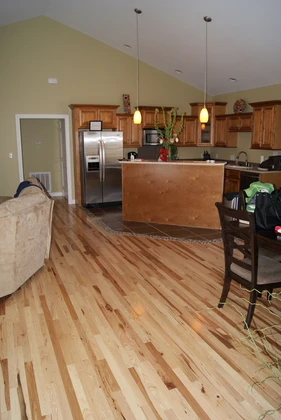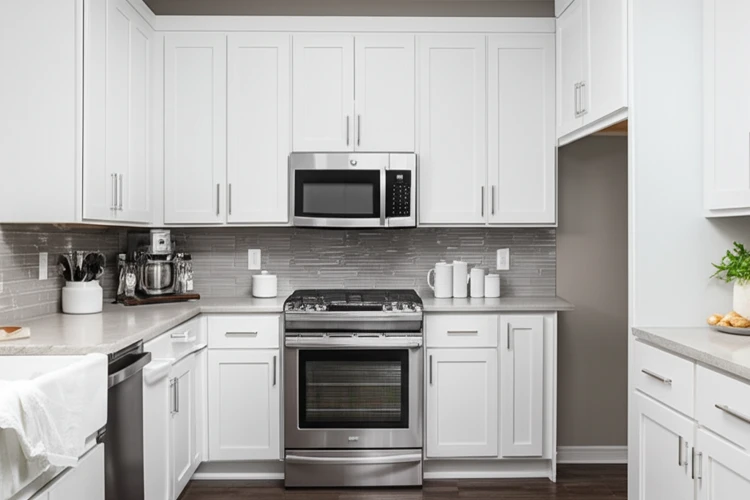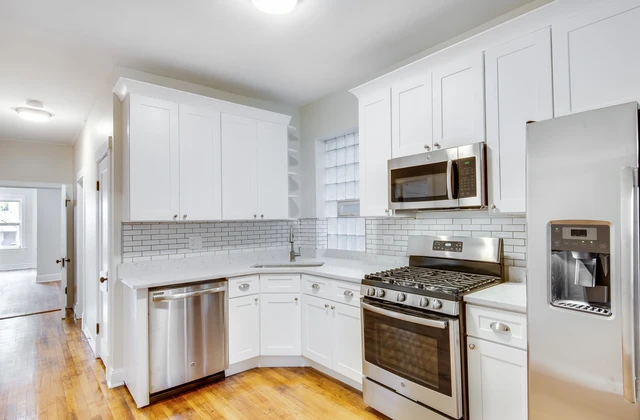Disclaimer: As an Amazon Associate, I earn commission from qualifying purchases.
In today’s fast-paced world, the concept of minimalism has gained significant traction, particularly in the realm of kitchen design. A minimalist kitchen design for small spaces not only enhances efficiency and organization but also promotes sustainability. According to recent statistics, the trend of minimalism has seen a 25% increase in adoption over the past five years, with a notable impact on the design of small kitchen spaces.
This article delves into the benefits, essential elements, planning, storage solutions, appliance choices, organization tips, lighting, sustainability, design for renters, common mistakes, and future trends in minimalist kitchen design for small spaces.
The Benefits of Minimalist Kitchen Design for Small Spaces
Minimalist kitchen design offers a plethora of benefits for small spaces. Key advantages include:
- Increased Functionality: Minimalist design emphasizes the use of every inch of space, ensuring that each element serves a purpose.
- Reduced Clutter: By eliminating unnecessary items, minimalist kitchens remain tidy and clutter-free, making it easier to find what you need.
- Easier Cleaning: With fewer items and streamlined surfaces, cleaning becomes a breeze, saving time and effort.
- Improved Aesthetics: The clean lines and neutral colors of minimalist design create a visually appealing and calming environment.
These benefits are supported by studies from reputable design publications, such as Architectural Digest, which highlight the positive impact of minimalist design on both mental well-being and physical space management.
Essential Elements of Minimalist Kitchen Design
The core principles of minimalist kitchen design revolve around simplicity, functionality, and the use of neutral colors. According to industry experts, these elements are crucial:
- Simplicity: Focus on essential items and avoid overcrowding the space with unnecessary appliances or decor.
- Functionality: Ensure that every item in the kitchen serves a practical purpose and is easily accessible.
- Neutral Colors: Opt for a color palette of whites, grays, and beiges to create a sense of space and tranquility.
Citing design principles from professional organizations like the American Society of Interior Designers, it is clear that adhering to these elements can transform a small kitchen into an efficient and aesthetically pleasing space.
Planning Your Minimalist Kitchen: The Basics
Planning a minimalist kitchen involves several key steps:
- Measure Your Space: Accurately measure the dimensions of your kitchen to determine the layout and placement of appliances and storage units.
- Identify Essential Items: Make a list of essential kitchen items and appliances, focusing on functionality and space-saving features.
- Create a Layout: Design a layout that maximizes the use of space, considering factors like traffic flow and ergonomics.
Professional kitchen designers emphasize the importance of these steps, often using examples from experienced homeowners to illustrate effective planning strategies.
Maximizing Storage in a Small Kitchen
Innovative storage solutions are essential for maximizing space in a small kitchen. Some effective strategies include:
- Wall-Mounted Shelves: Utilize vertical space with wall-mounted shelves to keep counters clear.
- Magnetic Knife Strips: Save drawer space by using magnetic strips to store knives.
- Pull-Out Drawers: Install pull-out drawers for easy access to pots, pans, and other kitchen essentials.
Industry professionals recommend specific storage products, such as the IKEA KUNGSFORS series, which is highly regarded for its space-saving features.
Choosing the Right Appliances for a Minimalist Kitchen
Selecting the right appliances is crucial for a minimalist kitchen. Essential, space-saving appliances include:
- Compact Refrigerators: Opt for smaller, energy-efficient models that fit seamlessly into the design.
- Multi-Function Ovens: Choose ovens that offer multiple cooking functions to save space and enhance versatility.
- Under-Counter Dishwashers: These appliances save valuable counter space and are ideal for small kitchens.
Reviews and ratings from reputable sources like Consumer Reports can guide you in choosing the best appliances for your minimalist kitchen.
Organizing Your Minimalist Kitchen
Organizing a minimalist kitchen involves several steps:
- Categorize Items: Group similar items together to make it easier to find what you need.
- Label Containers: Use clear, labeled containers to store dry goods and other items, ensuring everything has a designated place.
- Use Storage Containers: Invest in stackable storage containers to maximize vertical space and keep the kitchen organized.
Professional organizers recommend these strategies, often providing before-and-after examples to illustrate the transformative power of effective organization.
Minimalist Kitchen Lighting Solutions
Good lighting is essential for a functional and aesthetically pleasing minimalist kitchen. Some effective lighting solutions include:
- Pendant Lights: Use pendant lights to provide focused task lighting over work surfaces.
- Under-Cabinet Lighting: Install under-cabinet lighting to illuminate countertops and create a warm, inviting atmosphere.
Studies on the impact of lighting on kitchen efficiency, cited by professional lighting designers, underscore the importance of well-planned lighting in a minimalist kitchen.
Incorporating Sustainability into Your Minimalist Kitchen
Sustainability is a key aspect of minimalist kitchen design. Tips for promoting sustainability include:
- Reduce Waste: Opt for reusable containers and minimize the use of single-use plastics.
- Use Eco-Friendly Materials: Choose materials like bamboo or recycled glass for kitchen surfaces and accessories.
- Promote Energy Efficiency: Select energy-efficient appliances and use natural light whenever possible.
Environmental studies and guidelines from organizations like the EPA provide valuable insights into incorporating sustainability into your minimalist kitchen design.
Minimalist Kitchen Design for Renters
For renters, minimalist kitchen design can be both practical and aesthetically pleasing. Tips include:
- Temporary Storage Solutions: Use freestanding shelves and storage units that can be easily moved.
- Easy-to-Install Fixtures: Opt for fixtures that can be installed without damaging the walls or surfaces.
Professional renters and rental-friendly design blogs offer valuable insights and tips for creating a minimalist kitchen that is both functional and temporary.
Common Mistakes to Avoid in Minimalist Kitchen Design
Avoiding common pitfalls is crucial for a successful minimalist kitchen design. Common mistakes include:
- Overcrowding: Avoid filling the kitchen with too many items, which can lead to clutter and inefficiency.
- Poor Lighting: Ensure adequate lighting to enhance both functionality and aesthetics.
- Ignoring Ergonomics: Consider the comfort and ease of use when designing the kitchen layout.
Case studies and examples from professional designers highlight the importance of avoiding these mistakes to create a truly functional and aesthetically pleasing minimalist kitchen.
Minimalist Kitchen Design Trends for 2024
Looking ahead to 2024, several trends are emerging in minimalist kitchen design:
- Smart Appliances: The integration of smart technology in kitchen appliances is becoming increasingly popular.
- Sustainable Materials: There is a growing emphasis on using eco-friendly and sustainable materials.
- Biophilic Design Elements: Incorporating natural elements and greenery into the kitchen design is gaining traction.
Trend reports from industry publications and professional designers provide valuable insights into the future of minimalist kitchen design.
Frequently Asked Questions (FAQs)
Q1: What are the best color schemes for a minimalist kitchen?
Neutral colors like white, gray, and beige are ideal for a minimalist kitchen. They create a sense of space and calm, making the kitchen feel more open and inviting. These colors also provide a versatile backdrop for adding pops of color through accessories and decor.
Q2: How can I maximize counter space in a small kitchen?
To maximize counter space in a small kitchen, consider using wall-mounted shelves, magnetic knife strips, and pull-out drawers. These solutions help free up valuable counter space, making the kitchen more functional and less cluttered.
Q3: What are the essential appliances for a minimalist kitchen?
Essential appliances for a minimalist kitchen include a compact refrigerator, multi-function oven, and under-counter dishwasher. These appliances are designed to save space while providing all the necessary functions for cooking and cleaning.
Q4: How can I incorporate sustainability into my minimalist kitchen design?
To incorporate sustainability into your minimalist kitchen design, focus on using eco-friendly materials, reducing waste, and promoting energy efficiency. Opt for reusable containers, choose energy-efficient appliances, and use natural light whenever possible.
Q5: What are some budget-friendly minimalist kitchen design ideas?
For budget-friendly minimalist kitchen design ideas, consider opting for affordable storage solutions, DIY projects, and second-hand appliances. These options can help you create a functional and aesthetically pleasing kitchen without breaking the bank.
Conclusion
In conclusion, minimalist kitchen design for small spaces offers numerous benefits, including improved efficiency, organization, and sustainability. By following the guidelines and tips outlined in this article, you can create a functional, aesthetically pleasing, and eco-friendly kitchen that meets your needs.
While there may be challenges, such as limited space and budget constraints, these can be overcome with careful planning and creative solutions. Embrace the principles of minimalism to transform your small kitchen into a space that is both practical and beautiful.







